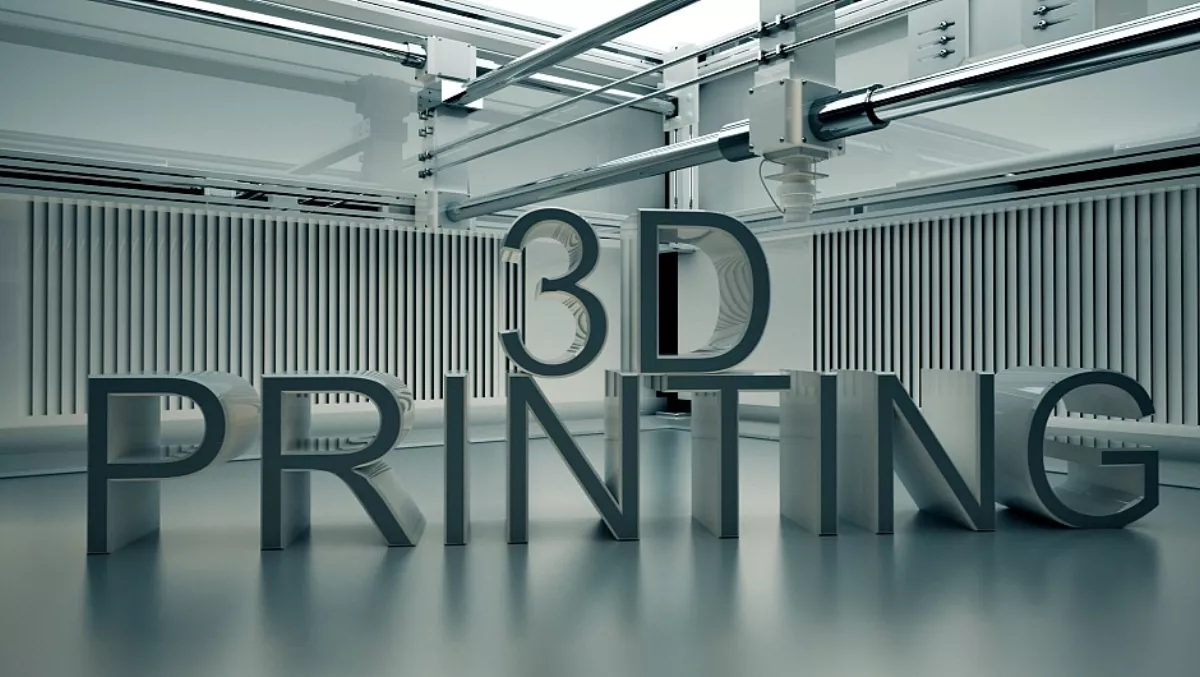
HP completes world first with 3D printing technology
HP has unveiled the world's first production-ready commercial 3D printing system, which is significant move in the company's plan to bring disruptive manufacturing solutions to market.
The HP Jet Fusion 3D Printing delivers physical parts up to 10 times faster and at half the cost of current 3D print systems, according to the company. By printing functional parts at the individual voxel level (a voxel is the 3D equivalent of a 2D pixel in traditional printing), HP offers customers the ability to change part properties and deliver mass customisation.
Designed for model shops and 3D print service bureaus, the HP Jet Fusion 3D Printing Solution is said to offer simplified workflow and reduced cost for radical prototyping, delivery of final parts manufacturing with new economics, and open materials and a software innovation platform that lowers barriers to adoption and enables new applications across industries.
"Our 3D printing platform is unique in its ability to address more than 340 million voxels per second, versus one point at a time, giving our prototyping and manufacturing partners radically faster build speeds, functional parts and breakthrough economics," says Stephen Nigro, president of HP's 3D printing business.
"The new HP Jet Fusion 3D Printing Solution delivers a combination of speed, quality, and cost never seen in the industry. Businesses and manufacturers can completely rethink how they design and deliver solutions to their customers," he says.
HP is offering two new 3D printers, designed for rapid prototyping and production. The HP Jet Fusion 3D 3200 printer is for prototyping, while the HP Jet Fusion 3D 4200 printer is designed for prototyping and short-run manufacturing needs. A synchronised set of tools includes intuitive software, a HP Jet Fusion 3D Processing Station with Fast Cooling, and high-quality materials.
Delivering on its open-platform vision announced in 2014, HP and certified partners will collaborate on materials new applications for its HP Multi Jet Fusion Solution, leading to reduced 3D printing costs and faster industry adoption of 3D printing, according to the company. HP is creating a 3D material app store and is already collaborating with certified partners including Arkema, BASF, Evonik and Lehmann - Voss, with plans to expand the open platform ecosystem over time.
HP has also collaborated with software partners to make the design-to-print process more intuitive. Partners include Siemens, Autodesk Netfabb and Materialize. Through its integration with key manufacturing software solution providers, HP is enabling deeper integration of 3D printing into manufacturing processes, according to the company.
HP is a founding member of the industry consortium that developed 3MF, an improved 3D printing file format. The HP Jet Fusion 3D Printing Solution is the first 3D printer to be fully compliant with this industry-leading standard.
As HP expands its palette of materials and colours, customers will be able to transform part properties at voxel level, giving improved control and allowing limitless combinations of applications, colours, and materials with properties including:
- The ability to print with embedded intelligence, like sensors in parts, is key to the Internet of Things.
- The printing of parts with embedded information, like invisible traces or codes, will deliver a future of increased security and tracking for reinventing supply chains.
In the future, up to 50% of the custom plastic parts for the HP Jet Fusion 3D Printers are expected to be printed and produced with HP Multi Jet Fusion technology versus traditional manufacturing methods, according to the company.
Paired with the likes of Sprout by HP, complete digitisation of design through production will disrupt traditional manufacturing, HP says. Digitisation and 3D printing can help revitalise regions that are balancing sustainability with industrial growth, and it can also reinvent traditional supply chains and create a 'ust in time' delivery model, according to the company.
This new 3D printing solution is the result of HP's research and expertise in precision mechanics, microfluidics and materials sciences, the company says. HP's partnerships are also integral to these technologies. At present, the company is working with manufacturers, co-development partners and strategic partners, including Nike, BMW, Autodesk, Jabil, Johnson - Johnson, Materialise, Proto Labs, Shapeways and Siemens.
"At Nike we innovate for the world's best athletes. We've been using 3D printing to create new performance innovations for footwear for the past several years. Now we are excited to partner with HP to accelerate and scale our existing capabilities as we continue to explore new ways to manufacture performance products to help athletes reach their full potential," says Tom Clarke, president of innovation at Nike.
Jens Ertel, head of BMW Group Additive Manufacturing Center, says, "BMW is a pioneer and early adopter of innovative technologies in the field of additive manufacturing, especially for prototyping in concept cars and series-like approval builds.
"For our future roadmap toward serial part production and personal customisation, we see major potential in our partnership with HP to investigate this new kind of 3D printing technology at an early stage. As one of the first partners, we had the chance to see the constant evolution of the machines over time from the first prototype approximately five years ago to the market ready product that is available now."
The HP Jet Fusion 3D 4200 Printer and the HP Jet Fusion 3D 3200 Printer will be available from late 2017. Pricing for the HP Jet Fusion 3D 3200 Printer starts at US$130,000. Pricing for the full end-to-end solution (HP Jet Fusion 3D 3200 Printer and Processing Station) starts at US$155,000.


